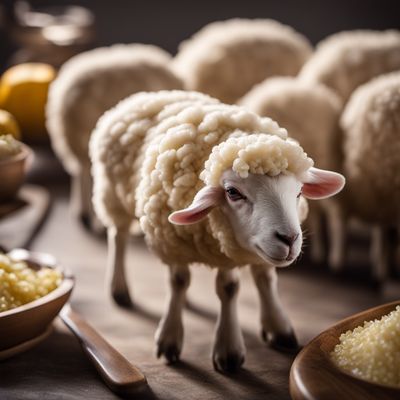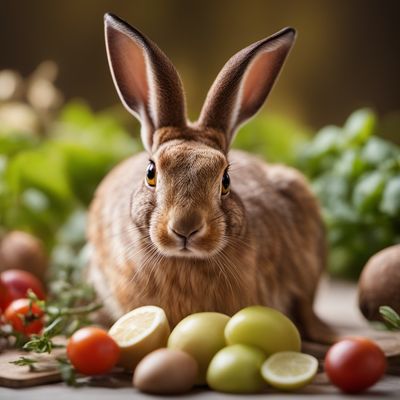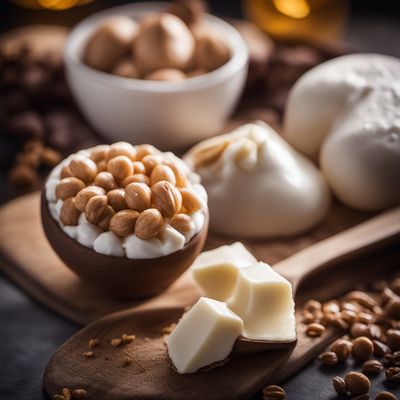
Ingredient
Deer liver
The Nutrient-Rich Delicacy: Exploring the World of Deer Liver
Deer liver is a dark, dense organ meat with a smooth texture and a distinct, robust flavor. It is typically deep red or brown in color and has a tender yet firm consistency. The liver is known for its high nutrient content, including vitamins A, B12, and iron. When cooked, deer liver becomes tender and develops a rich, earthy taste that pairs well with various ingredients and cooking techniques.
Origins and history
Deer liver has a long history of consumption in various cultures around the world. It has been a staple in traditional diets of indigenous communities, particularly in regions where deer hunting is prevalent. The liver was highly valued for its nutritional density and was often considered a delicacy. In many cultures, deer liver is still celebrated as a special ingredient, used in traditional dishes and festive meals.
Nutritional information
Deer liver is a nutritional powerhouse, packed with essential vitamins and minerals. It is an excellent source of vitamin A, which supports vision health and immune function. Additionally, it is rich in vitamin B12, which is crucial for red blood cell production and neurological health. Deer liver also provides a significant amount of iron, an essential mineral for oxygen transport and energy production.
Allergens
Deer liver does not contain any known allergens.
How to select
When selecting deer liver, look for fresh cuts that are firm and have a deep red or brown color. Avoid liver with a strong odor or any signs of discoloration or sliminess. If purchasing from a butcher or farmers market, ensure that the liver comes from a reputable source and has been properly handled and stored.
Storage recommendations
To maintain the freshness and quality of deer liver, it should be stored in the refrigerator at a temperature below 40°F (4°C). It is best to wrap the liver tightly in plastic wrap or place it in an airtight container to prevent exposure to air and moisture. Properly stored, deer liver can last for up to 2-3 days in the refrigerator.
How to produce
Deer liver is typically obtained through hunting or sourcing from specialty suppliers. It is not commonly produced by amateurs.
Preparation tips
Before cooking deer liver, it is important to rinse it thoroughly under cold water to remove any residual blood. Pat it dry with paper towels and then proceed with the desired recipe. Deer liver can be pan-fried, grilled, or incorporated into stews and pâtés. To enhance its flavor, marinating the liver in a mixture of herbs, spices, and acidic ingredients like lemon juice or vinegar can help tenderize and reduce any potential gamey taste.
Substitutions
If deer liver is not available, beef liver or chicken liver can be used as substitutes. Both offer a similar texture and flavor profile, although they may have slight variations in taste.
Culinary uses
Deer liver is commonly used in various culinary preparations. It can be pan-fried and served with caramelized onions, incorporated into pâtés or terrines, or used as a key ingredient in traditional liver and onions dishes. Its rich flavor also makes it a popular choice for adding depth to stews, sauces, and gravies.
Availability
Deer liver is commonly available in regions where deer hunting is permitted or in specialty butcher shops that cater to game meats. It is more prevalent in rural areas or regions with a strong hunting culture.
More ingredients from this category

Sheep liver
The Delicate Delight: Sheep Liver

Pig liver
The Rich and Nutritious Pig Liver

Hare liver
The Delicate Delight: Exploring the World of Hare Liver

Equine liver
The Delicate Delight: Equine Liver

Rabbit liver
The Delicate Delight

Bovine liver
The Nutrient Powerhouse: Bovine Liver

Wild boar liver
The Savory Delicacy: Wild Boar Liver

Goat liver
The Nutrient-Rich Delicacy: Exploring the World of Goat Liver